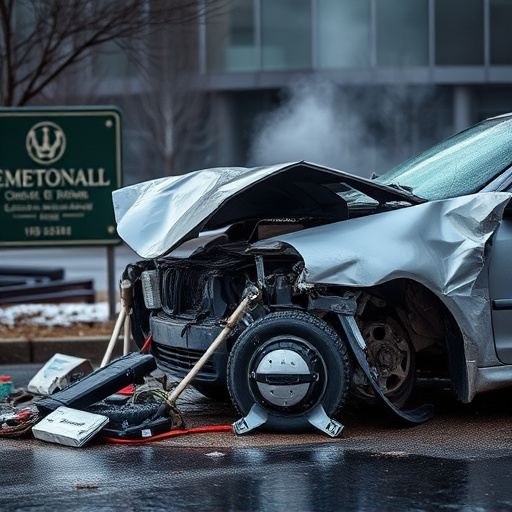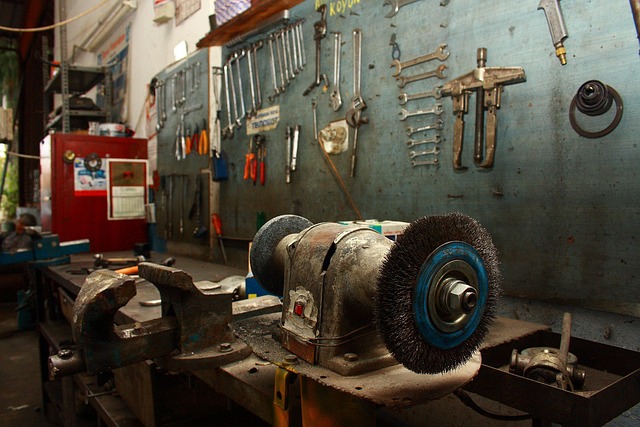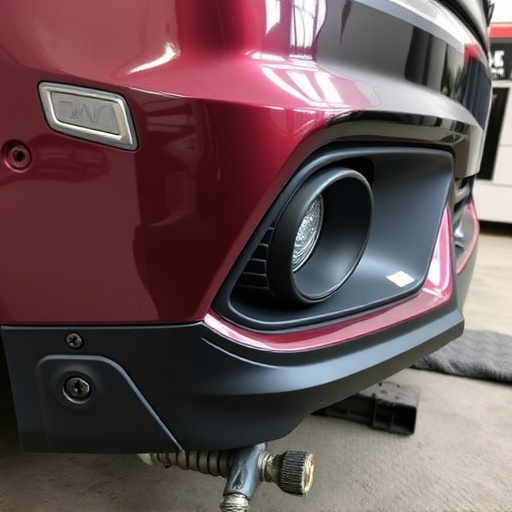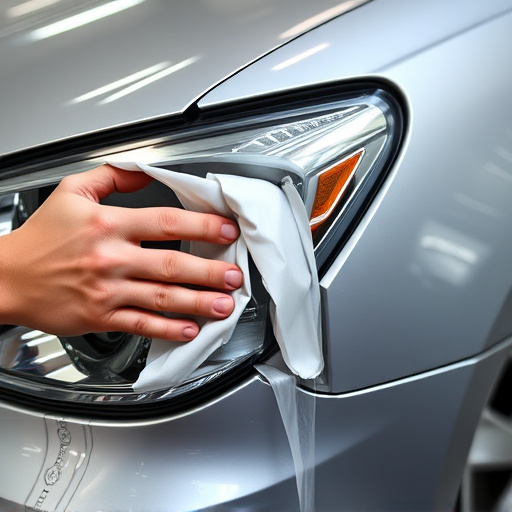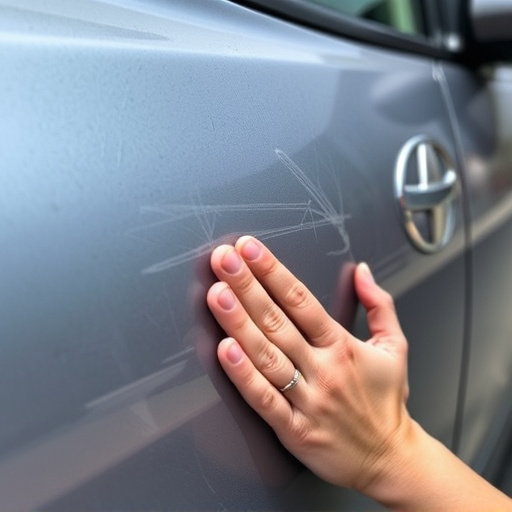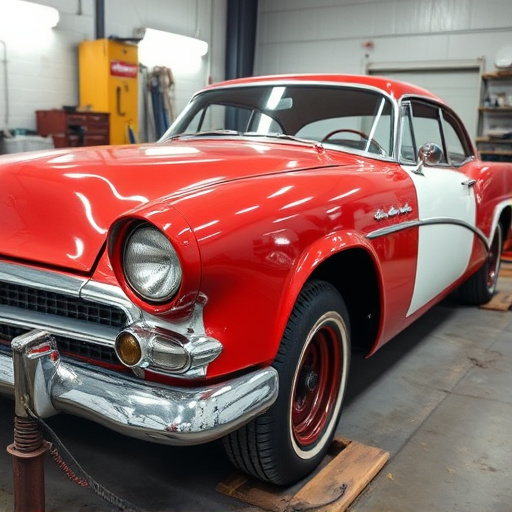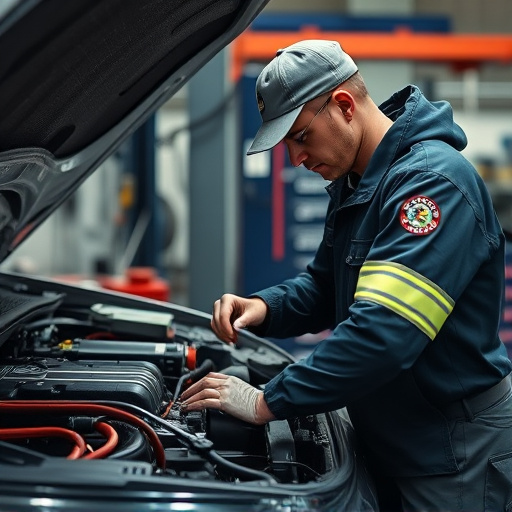Bumper dent removal uses advanced paintless dent repair (PDR) technologies to restore damaged bumpers without painting or extensive repairs, preserving the vehicle's original factory finish and structural integrity. PDR is a cost-effective, eco-friendly alternative to traditional methods, suitable for minor dents like fender benders and door dings, and appealing to budget-conscious and environmentally conscious car owners. The process involves thorough inspection, cleaning, preparation, and the use of specialized tools to gently remove dents, ensuring a seamless finish that blends with the rest of the bumper.
Bumper dent removal has become a popular choice for car owners seeking quick and effective repairs. This article delves into the world of paintless repair techniques, offering an innovative solution to fix those pesky dents without compromising the vehicle’s finish. We’ll explore the advantages of this method, providing a comprehensive guide to successful bumper restoration using simple tools and minimal disruption to your vehicle. Discover how paintless dent removal can save time and money while maintaining your car’s aesthetics.
- Understanding Bumper Dent Removal Techniques
- Advantages of Paintless Repair Methods
- Step-by-Step Guide to Successful Bumper Restoration
Understanding Bumper Dent Removal Techniques

Bumper dent removal is a specialized process that involves advanced techniques to restore damaged car bumpers to their original state without the need for painting or extensive repairs. This method has gained popularity due to its effectiveness, efficiency, and cost-saving benefits, especially in cases of minor dents and dings. The key lies in utilizing paintless dent repair (PDR) technologies, which allow technicians to gently push out the dented area back into place, effectively erasing the damage.
This modern approach differs from traditional auto body shop methods, where removal and replacement parts are often required. In contrast, an auto collision center specializing in bumper dent removal will assess the damage and employ tools like specialized hammers, air bags, and precision-engineered bars to manipulate the metal without compromising its structural integrity. This not only speeds up the repair process but also ensures that your vehicle retains its original factory finish and overall aesthetic appeal, making it a preferred choice for those seeking minimal auto maintenance interventions.
Advantages of Paintless Repair Methods

Paintless dent repair techniques have gained significant popularity for bumper dent removal due to their numerous advantages over traditional methods. Firstly, it preserves the original factory finish of the vehicle, eliminating the need for repainting and ensuring the car retains its aesthetic value. This approach is particularly beneficial for minor dents, such as those caused by fender benders or door dings, where the damage is superficial.
Additionally, paintless repair methods are more cost-effective compared to conventional dent removal processes. By avoiding sandblasting, painting, and labor-intensive procedures, car owners can save substantial amounts on repair costs. Moreover, these techniques are environmentally friendly as they produce no harmful waste or emissions, making them a preferred choice for eco-conscious individuals.
Step-by-Step Guide to Successful Bumper Restoration
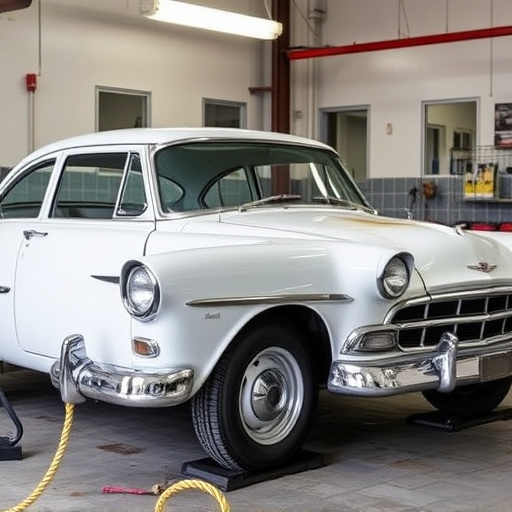
Restoring a bumper to its original condition involves a meticulous process known as paintless dent removal (PDR). Here’s a step-by-step guide to achieving successful bumper restoration:
1. Inspection and Assessment: Begin by thoroughly inspecting the damaged bumper to identify the extent of the dent or crease. This initial step is crucial as it determines the repair techniques suitable for your bumper. Different types of dents may require specific PDR methods, ensuring an accurate diagnosis is key.
2. Cleaning and Preparation: Before starting any repair work, ensure the bumper surface is clean and free from dirt, debris, or any residue. A thorough cleaning ensures better adhesion during the restoration process. Prepare the area around the dent by masking it off with tape to prevent overspray from other car paint services.
3. PDR Tools and Techniques: Paintless dent repair specialists utilise a range of tools like plastic hammers, mallets, and specialized rods. These tools are designed to gently pry and push the dented area back into its original shape without damaging the surrounding panel or painting. The technique varies based on the dent’s size and depth, with some methods involving heating the panel to facilitate removal.
4. Removal of the Dent: Using the appropriate PDR tools, carefully work around the dent, applying gentle pressure to lift the depressed area. This step requires precision and patience, as over-forcing can lead to paint damage or other vehicle restoration complications. Once the dent is removed, smoothen the panel using specialized tools to achieve a seamless finish.
5. Finishing Touches: After successful dent removal, inspect the restored area for any imperfections. Fine-tune the panel by making minor adjustments to ensure it blends seamlessly with the rest of the bumper. A final inspection under different lighting conditions ensures the repair is flawless.
Bumper dent removal using paintless repair techniques has emerged as a game-changer in the automotive industry, offering a cost-effective and efficient solution for minor dents and dings. By employing advanced tools and expertise, professionals can restore bumpers to their original condition without the need for time-consuming painting or complex procedures. This eco-friendly approach not only saves money but also ensures a seamless repair that matches the vehicle’s factory finish. With the right techniques and a step-by-step guide, anyone can effectively navigate bumper dent removal, keeping their vehicles looking as good as new.



